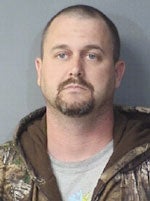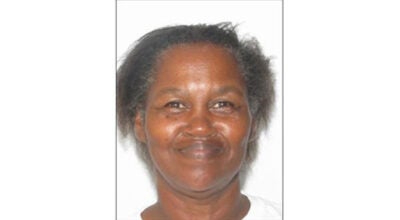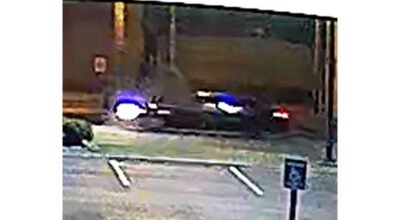Hadsell found guilty of murder, concealment of dead body
Published 7:42 pm Monday, February 7, 2022
|
Getting your Trinity Audio player ready...
|
The jury in the Wesley Paul Hadsell murder trial deliberated for 40 minutes after closing arguments Feb. 7 before delivering verdicts, finding Hadsell guilty of first-degree murder and concealment of a dead body.
These were the charges Southampton County Commonwealth’s Attorney Eric A. Cooke and Deputy Commonwealth’s Attorney Toni M. Colvin presented to the jury earlier in the day in their closing arguments.
Hadsell, 43, was formally charged on Jan. 14, 2019, with first-degree murder of his stepdaughter, Anjelica “A.J” Hadsell, on March 3, 2015.
A.J. was a freshman on spring break from Longwood University in Farmville at the time of her disappearance in 2015.
The search took Norfolk Police investigators and a dive team to a pond off Walters Highway/U.S. Route 258 and Joyners Bridge Road in Isle of Wight County on April 4, 2015.
Within the week, Norfolk Police came to Southampton County and told the Southampton County Sheriff’s Office of a body found outside a house in the 34000 block of Smiths Ferry Road/U.S. 258. The body was taken to the medical examiner’s office in Norfolk, where it was positively identified as that of A.J. Hadsell.
During the prosecution’s closing argument, Colvin highlighted that there was overwhelming evidence that Wesley Hadsell was guilty. She also noted that juries can convict someone based on circumstantial evidence, using their common sense to judge testimony.
She opened with a quote that she noted was from Hadsell himself: “Say you kidnap, rape and murder someone. You have to have someplace to go.”
Colvin said that place, in this case, was 34160 Smiths Ferry Road in Southampton County, where A.J.’s body was found.
Financial, phone and GPS records show that Hadsell drove to and was at that location March 4, 2015, Colvin said.
She noted that Hadsell had been kicked out of the house by his family because he was using drugs and was living out of a hotel at the time.
Spring break brought A.J. home the week of March 1, 2015.
“(A.J.) came home from Longwood, and she had a lot of plans,” Colvin said, but she added that Wesley Hadsell was not part of them.
Colvin noted that Hadsell told lots of people of an interaction he allegedly had with A.J. while she was home on spring break. He said it took place March 2 at a gas station where he said they met, and he said she asked him for money and he gave her $1,200. But Colvin and Cooke noted that he mentioned different amounts at different times, also saying $200, $100 and $1,300.
Cellphone records indicate A.J.’s phone was with Hadsell’s phone, traveling around Norfolk, on March 2, the day she went missing, Colvin said.
Both Colvin and Cooke spoke about the evidence that she was abducted from the Hadsell residence March 2, noting that A.J. was known for her orderliness and yet the laundry she was doing was left half done, the music she had on was left playing, and she left a brief handwritten note, that even Hadsell said was unlike her, prompting him to suggest someone made her write it.
Norfolk’s Chief Medical Examiner determined A.J. died from acute heroin poisoning.
Colvin said heroin was Hadsell’s murder weapon, noting that he had mentioned knowing how deadly heroin could be and that he personally avoided it for this reason.
She said records show he tried calling his drug dealer 30 to 40 times in the early morning hours of March 3, and the drug dealer, who Cooke said has since turned his life around, testified that he sold heroin to Hadsell.
Colvin showed the jury photos of A.J.’s body after it was discovered, and she mentioned the control injuries on her body. Colvin indicated bruising was consistent with someone being held down and forced to intake something.
Colvin highlighted that A.J. did not use drugs, something a hair analysis indicated, along with other evidence.
Colvin pointed out a variety of ways during the search for A.J. in 2015 that Hadsell did things and seemed to possess knowledge and inclinations that implicated him. She said a member of law enforcement noted how quickly he began using the past tense when talking about A.J.
She said he claimed to have received separate tips on the location of A.J.’s phone and the location of some of her clothes, but when asked to see evidence of the tips, he said he had deleted them.
She noted he lied about not breaking into the house of Corey French, a friend of A.J.’s, where a jacket belonging to her was found, but Hadsell then admitted to breaking in during a WAVY-TV interview, claiming he was doing it out of a desire to find clues about what had happened to her.
Colvin said Hadsell was the first one to mention heroin during the investigation, and when A.J.’s body was found, he started talking about “waiting on a toxicology report.”
Colvin argued that Hadsell’s meddling with the investigation was to keep suspicion away from himself and to keep investigators away from Southampton County.
One of the primary themes of Ellenson’s closing argument was “Trust but verify.”
“So many things in this case, they’re not verified,” he said.
He said that the commonwealth presented as facts things that Hadsell allegedly told them.
Ellenson called into question the work of some of the law enforcement officers. In one instance, he said the officer’s notes were inconsistent with what he said.
The defense attorney noted that another individual testified Hadsell arrived at the Hadsell residence shortly after noon on March 4. Ellenson said this is when Hadsell was supposedly at the site on Smiths Ferry Road.
Ellenson said much had been made of the cellphone data, but he argued that the points of location chosen by investigators were cherry-picked and did not demonstrate a continuous flow.
He said the autopsy report was wrong, citing that the level of confidence in its accuracy left room for error. He said that on all but two bruises, the examiner used the phrase “it’s more likely than not” rather than being definitive, leaving room for what could be seen as blood redistribution.
Pushing back on the argument from the commonwealth that Hadsell raped his stepdaughter, Ellenson said her mother and Hadsell’s wife, Jennifer Hadsell, testified that at no point in his years in the home had A.J. ever expressed concerns to her that he was a threat in this regard at all.
Ellenson spent time advancing two theories of what happened to A.J. First, he suggested that her killer could have been Zach Hoffer, the ex-husband of Jennifer Hadsell.
Ellenson said he was not going to say that Hoffer did it, “but it sure makes a lot more sense,” he added.
He highlighted how a cadaver dog alerted on Hoffer’s vehicle but did not hit on Hadsell’s work van at all.
Ellenson closed with a strong focus on another theory — that A.J. committed suicide.
He highlighted images found on her phone that were part of a theme called “Suicide is my father.”
One of the images had the captions, “Have you had suicidal thoughts lately?” “Yeah.” Another had the caption, “I have these feelings inside that I can’t… I can’t control.”
Ellenson mentioned that A.J. was going through a breakup with her boyfriend on some level.
He said she was in the early months of taking a headache medication that has, as part of its disclaimer, had a warning about increased risk of suicidal thinking, feeling and behavior in children and adolescents.
He suggested the striking phrase “Suicide is my father” could make sense, saying that all of her father figures, including Hadsell, had abandoned her at that point.
Ellenson concluded by telling the jury that if it was reasonable to think that Hoffer killed A.J. or that she committed suicide, they could not convict Hadsell.
In the commonwealth’s rebuttal, Cooke said the images on A.J.’s phone were from her internet cache along with other content and not representative of her focusing on them.
Cooke defended law enforcement against Ellenson’s “trust but verify” theme. Among his comments, he noted that the officer whose notes did not include something he said verbally was born out of the fact that the notes were simply a summary.
Cooke said Hoffer was eliminated as a suspect, having a tight alibi; the blood found in his vehicle belonged only to him.
With regard to the theory that A.J. committed suicide, Cooke said, “That’s absurd in the extreme.” If that were true, he asked, how did she get to Southampton County?
Colvin had noted that the examiner could not tell if A.J. was raped before or after death, as her pants were found pulled down, which led to deterioration of that part of her body.
“Why does it look like a sex crime?” Cooke said. “Because it was a sex crime.”
He encouraged the jury not to forget that Hadsell and A.J.’s phones were together.
He said that if Hadsell simply somehow discovered her body after she committed suicide, why would he not call the police or take her body to a hospital? Cooke said someone who loved her would not leave her body like it was found.
Responding to the positive things said about Hadsell by Ellenson with regard to Hadsell’s pre-existing father-daughter relationship with A.J., Cooke noted that people are not one-dimensional but are rather capable of both good and evil.
Cooke also highlighted Hadsell’s drug use at the time as a factor.
Southampton Circuit Court Clerk Richard L. Francis said sentencing is tentatively set for April 4.
He said Southampton Circuit Court Judge Lawson Wayne Farmer plans to hold the sentencing at the Hunterdale temporary courtroom facility where the trial has been taking place due to renovations at the Southampton County Courthouse in Courtland.






